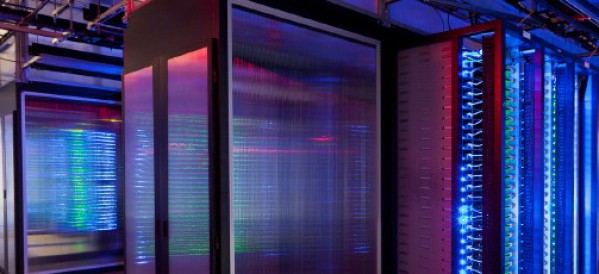Layout of new standards for Data Centers

The world of IT is constantly changing and these days we can see a rationalization of applications, hardware virtualization and consolidation, leaving organizations with a large part of the legacy facilities, read capacity, which was initially in operation. The new high-density servers, networking and storage equipment, along with converged infrastructure systems such as VCE Vblock Systems, Cisco Unified Data Center, Dell and IBM PureSystems Active Systems, means that less space is needed for more powerful processing capability to be available to the business.
With the introduction of cloud computing, data center managers and system architects no longer have to decide just what the best infrastructure for critical IT load. Now they also have to decide by what kind of service can do it. A critical IT load that usually is fully installed on an internal infrastructure to the company itself, which can be transferred to a colocation facility or be outsourced through infrastructure, platform or software as a service (IaaS, PaaS or SaaS).
Even critical IT loads kept internally can not stay there forever, just can not quite make sense to design a data center to operate certain IT loads of endless form. Cloud is on the verge of becoming a popular platform, and organizations that have built a data center to host a special for a long period of time application, may be disadvantaged.
Flexible layout of Data Centers
When you are designing a data center for the future, consider the hardware infrastructure and IT support it. From the point of view of hardware, a complete approach to managing the life cycle of IT maintains a dynamic infrastructure. The hardware assets can grow and shrink according to the changing needs, being able to sell the surplus equipment to recover some costs. With certain software licensing policies, there is the flexibility of acquiring licenses and dispense on demand.
The main demands, however, revolve around the infrastructure. A data center is a primarily fixed assets, if the data center has 200 square feet and the deal states that only 100 square feet will be required for critical IT load, the walls can not converge. Even if half the space can be redirected to another application, for an environment of IT teams, for example, this solves only a small part of the problem.
The infrastructure of a legacy data center has a fixed layout for the services. The electrical distribution boards type PDU (Power Distribution Unit) and the air conditioning systems of the type CRAC (Computer Room Air Conditioner) are fixed in place. The UPS equipment (uninterruptible power systems) and auxiliary generators are sized to fit the unique design of the data center.
Below are some tips to consider in mapping the future layout of the data center:
a) Planning the floor
The first step to start building the future data center is on the architectural design of the physical environment. The location of walls in relation to structural parts and solutions raised floor is very important to provide increases or decreases in size allowing for proper interference management aspect.
b) planning of electrical distribution and telecommunications cabling
Both the electrical distribution and the telecommunications cabling should be superestruturados. The paths of electrical distribution and for telecommunications should be distinct and separate, designed in a way that have access to future changes in layout.
c) Energy
Instead of installing the PDUs along the walls and pillars, one can employ solution freestanding tables with the arrival of the feeders above the panel. In reforming the power distribution can be relocated in such a flexible way as IT equipment.
Equipment for UPSes and generators, to devise a system that allows the addition of new modules without the need for changes in the physical part and electrical distribution.
Fuel consumption by generators is directly linked to the level of capacity used. If there is underutilization of capacity, higher fuel consumption will occur. Thus, the capabilities of IT load and available power of the generator shall be suitable for the engineering design.
d) Planning of cooling
The use of a solution-type free-air cooling system or other low power consumption, reduce the impact of a redesign of cooling when the size of data center changes. If combined with effective approaches to hot and cold aisles, returns the plenum or dutados, the cooling system will be adequate to the need, taking up smaller concerns relocation of equipment.
When there is a need to use in the data center cooling systems based on CRAC units of type, choose a modular system with multiple CRAC units balanced with characteristic variable speed.
Full article: http://corporate.canaltech.com.br








